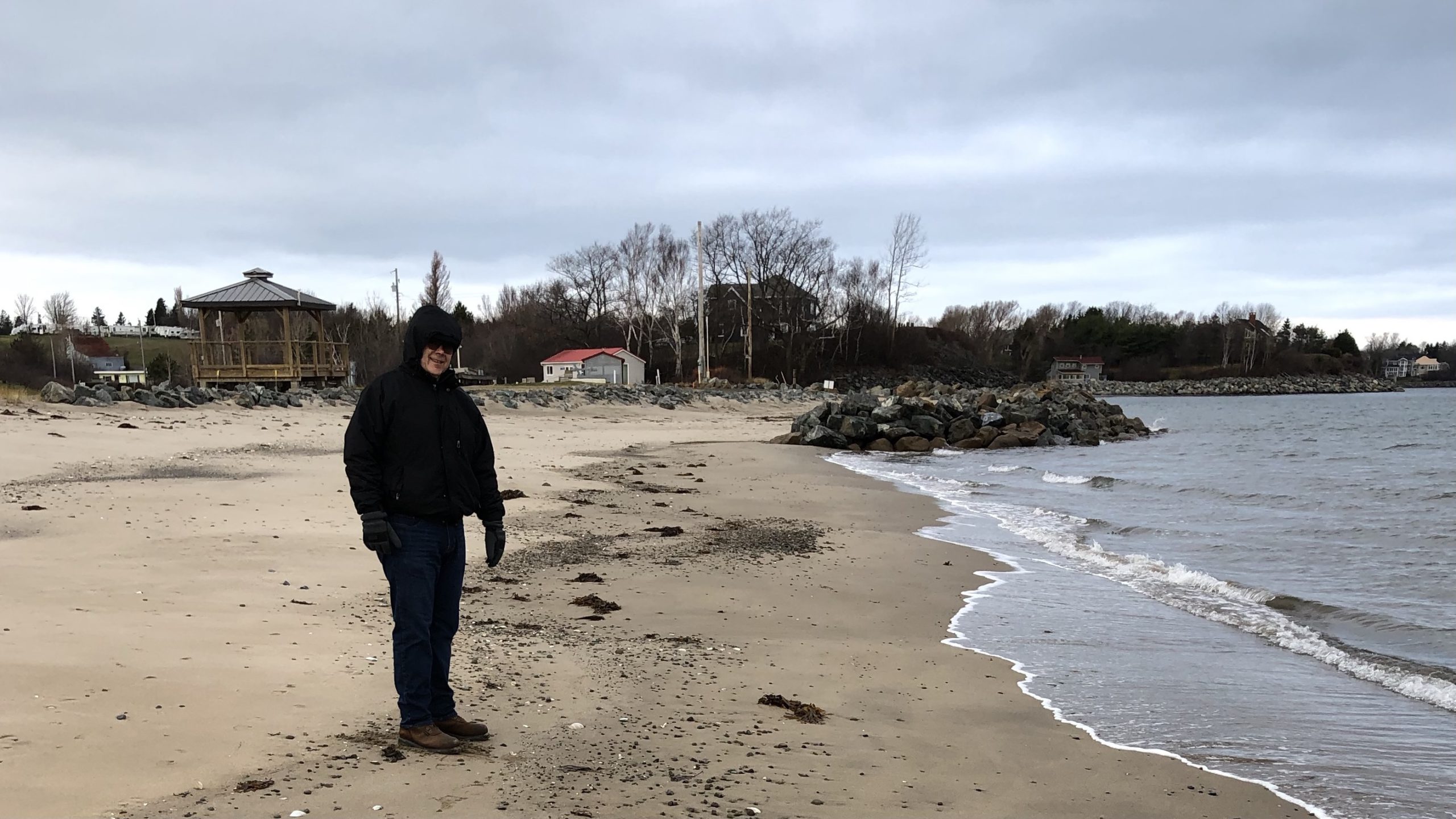Court hears dispute over beach wall in Pictou County
Community members argue the wall is on Crown land and blocks access to James Beach

caption
Geoff Skerrett stands on the high tide line.Beachgoers had their day in court Wednesday as part of their ongoing fight over an armour rock wall on James Beach, in Pictou County.
A judicial review was held in Nova Scotia Supreme Court in Halifax to determine whether the province’s decision to allow the wall was reasonable.
Wayne and Helen Chisholm began to construct the wall in 2017 on their beach property. They continued in 2019, ultimately building the wall into the ocean in 2020.
Maryn Lynn, Sandra Lynn and Beth Skerrett don’t like the rock wall. They have ties to the area and argue the wall makes it difficult for the public to access the rest of the beach.
In an interview before the hearing, Skerrett said she visits the beach “almost daily” with her grandchildren in the summer.
Skerrett and the Lynns filed complaints in January 2020, and again in May. In June, the minister of lands and forestry responded, saying there was no violation of any laws.
They asked for a judicial review of that decision, which could force the department to take another look at the case but not force the remove of the wall.

caption
Beth Skerrett walks with her granddaughter in the summer of 2020. She says this shows the difficulty of getting to James Beach with the new wall.The arguments
Jamie Simpson represents the applicants, including Skerrett, the Lynns and a number of community members who are part of the Black Point Beach Preservation Group. On Wednesday, Simpson argued the Chisholms extended the rock wall below the normal high water mark without a permit. The Crown Lands Act states that Crown land begins at the normal high water mark, and that private property owners cannot build below this water mark without permission.
Additionally, he argued that this rock wall violates the Endangered Species Act, as James Beach is considered a critical habitat for piping plovers, an endangered bird.
The Beaches Act was also violated because the wall was built without a permit, and restricts public access to the beach, Simpson added.
The Crown, represented by Myles Thompson, argued that all of the construction and work that was done on James Beach was on private property. He said the Department of Lands and Forestry visited the property five times in the last three years, and during those visits they never found evidence that the wall was in violation of the three acts.

caption
Progression of the wall being built between 2017 and 2020.Ordinary high water mark
The issue of boundaries between Crown and private land was disputed at length. In Nova Scotia, the mean high water mark decides where private property ends and Crown land begins.
Simpson argued that the minister’s decision was based on the premise that the ordinary high water mark had not changed. He said rising sea levels, climate change and erosion have resulted in the loss of land on James Beach over the last several years, meaning the boundaries of Crown land and private property have shifted. The minister did not take this into account when making his decision, Simpson argued.
Thompson acknowledged that James Beach is dynamic and constantly changing and eroding, but argued that it was a November 2018 storm that changed the shoreline, therefore the wall is still on private property.
Justice Deborah K. Smith is reserving her decision for a later date.
Maryn Lynn said she understands the Chisholms’ desire to protect their property, but she’s hoping for a decision in her favour. She feels that a “troubling precedent” could be set if the province wins.
“Regardless of the outcome we’ve done the right thing by flagging it,” Lynn said before the hearing.
About the author

Natalie MacMillan
Natalie MacMillan is from Toronto, Ontario, and works out of Halifax.
